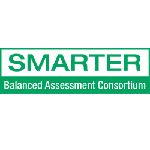SMARTER Specs Suggest Complex Tests
 Both of the Race to the Top assessment consortia published frameworks that provide some clues as to what we can expect in the new tests that will be introduced in the next few years. Both organizations are inviting feedback.
Both of the Race to the Top assessment consortia published frameworks that provide some clues as to what we can expect in the new tests that will be introduced in the next few years. Both organizations are inviting feedback.SMARTER Balanced Assessment Consortium (SBAC) published its “content maps and specification” in English/language arts. In the announcement, Director Joe Willhoft said, “These specifications are an important step toward ensuring that the SMARTER Balanced assessment system accurately measures student achievement across the full range of college- and career-ready skills included in the Common Core State Standards.”
The SBAC work is based on five design principles (p7):
- Assessments are grounded in a thoughtful, standards-based curriculum and are managed as part of an integrated system
- Assessments include evidence of student performance on challenging tasks
- Teachers are integrally involved in the development and scoring of assessments
- Assessments are structured to continuously improve teaching and learning
- Assessment, reporting, and accountability systems provide useful information on multiple measures that is educative for all stakeholders
The SBAC focus on evidence-based design is encouraging (here’s a Mislevy paper and a blog about Cisco’s adaptation of evidence-based assessment).
SBAC reading and writing assessments will be organized to support five “claims”:
- Students can read closely and critically to comprehend a range of increasingly complex literary and informational texts.
- Students can produce effective writing for a range of purposes and audiences.
- Students can employ effective speaking and listening skills for a range of purposes and audiences.
- Students can engage appropriately in collaborative and independent inquiry to investigate/research topics, pose questions, and gather and present information.
- Students can use oral and written language skillfully across a range of literacy tasks.
The SBAC specifications makes clear that (like PARCC) the Common Core focus on writing about text will carry through to the new tests—a focus on meaning, comparison, analysis, and synthesis. The emphasis shifts from literary texts in elementary to informational texts by high school. “A focus on literacy instruction that centers on careful examination of texts – reading closely and drawing evidence from the text to support inferences and judgments made.”
About speaking and listening, the specs say, “Most of the listening items/tasks will be administered as part of the on-line computer-adaptive assessment.”
Collaboration and research skills (claim 4) will be a particular challenge. Two statements that suggest rich and complex assessments, “All short research projects will be assessed with extended responses/performance assessments, preferably over two or more days at high school.” And, “The summative assessment would be a presentation of learning – with some flexibility of medium used: oral, visual/graphic, written or a combination.”
It’s still a challenge to read the SBAC specs and envision how the shared assessment system will work and what it will cost. It seems clear that, as expected, this will be a richer but more complex and expensive system to administer than the proposed PARCC system.
The content specifications, feedback surveys and a recorded Webinar on evidence-based design are available on the Consortium’s Website.








0 Comments
Leave a Comment
Your email address will not be published. All fields are required.